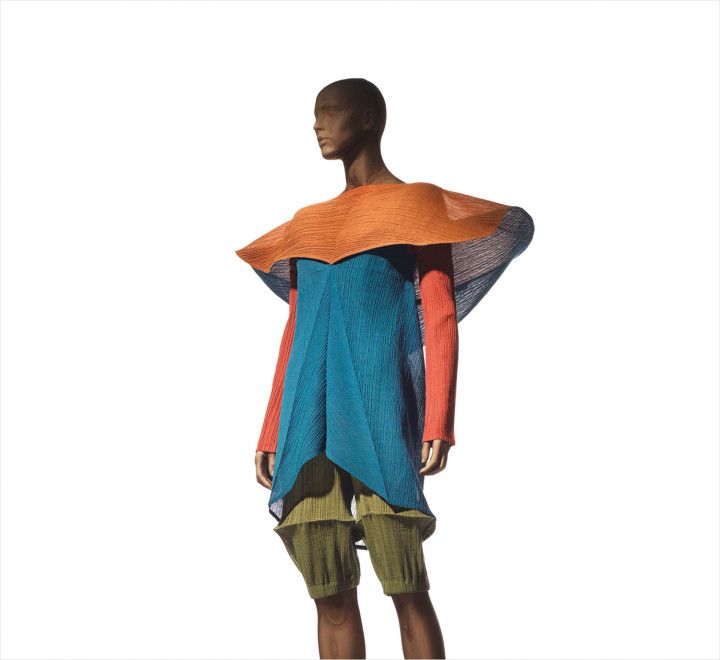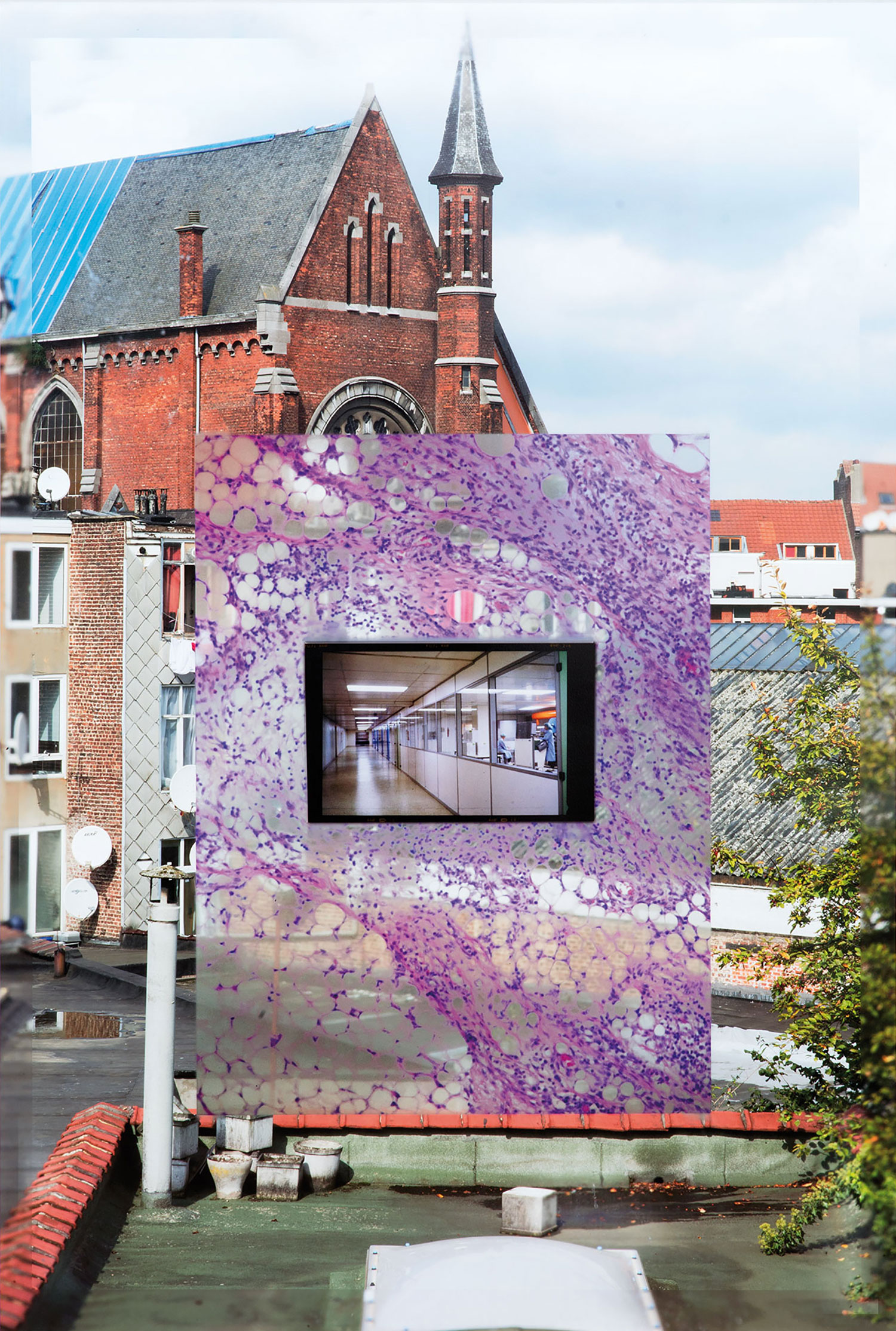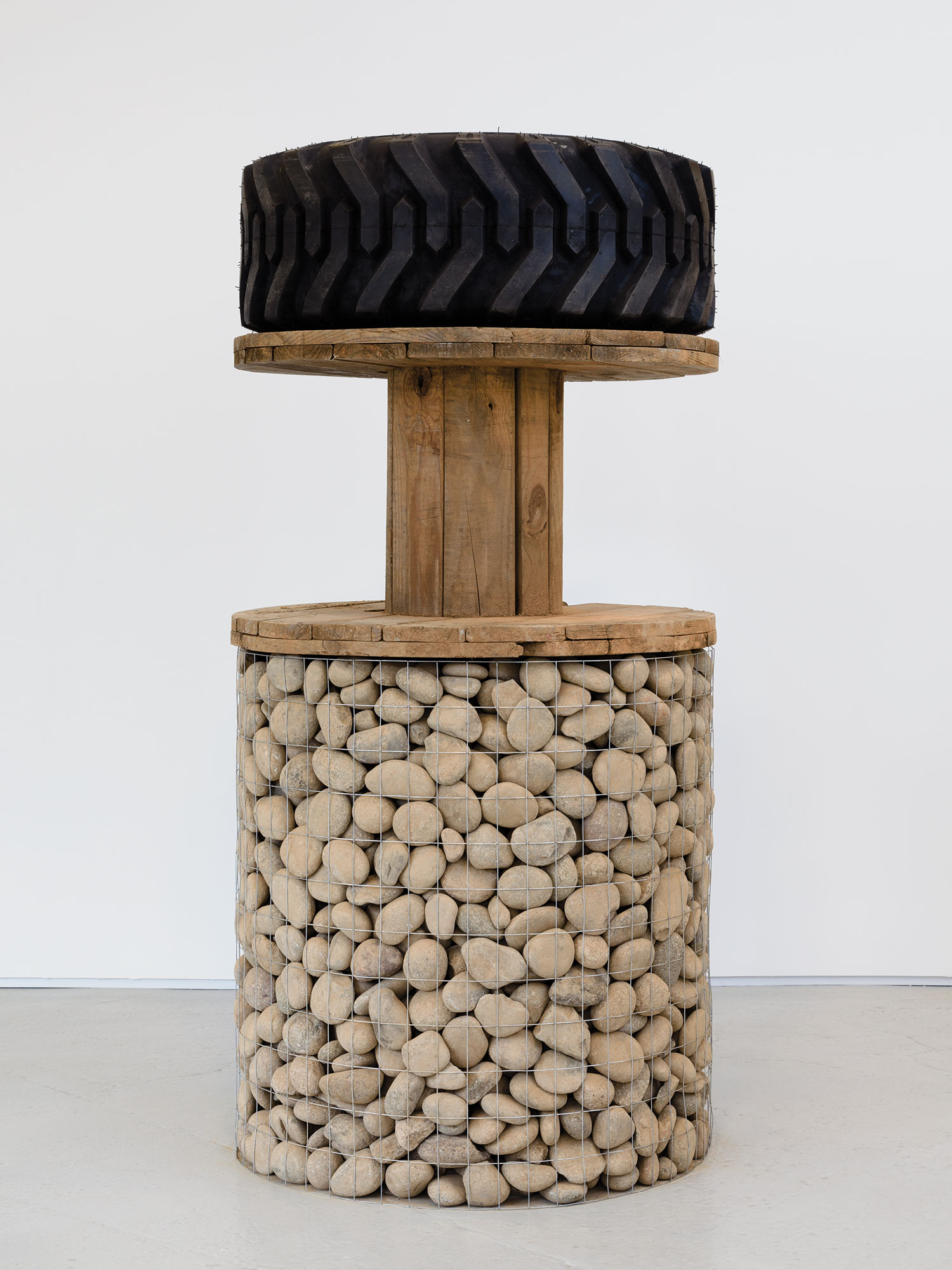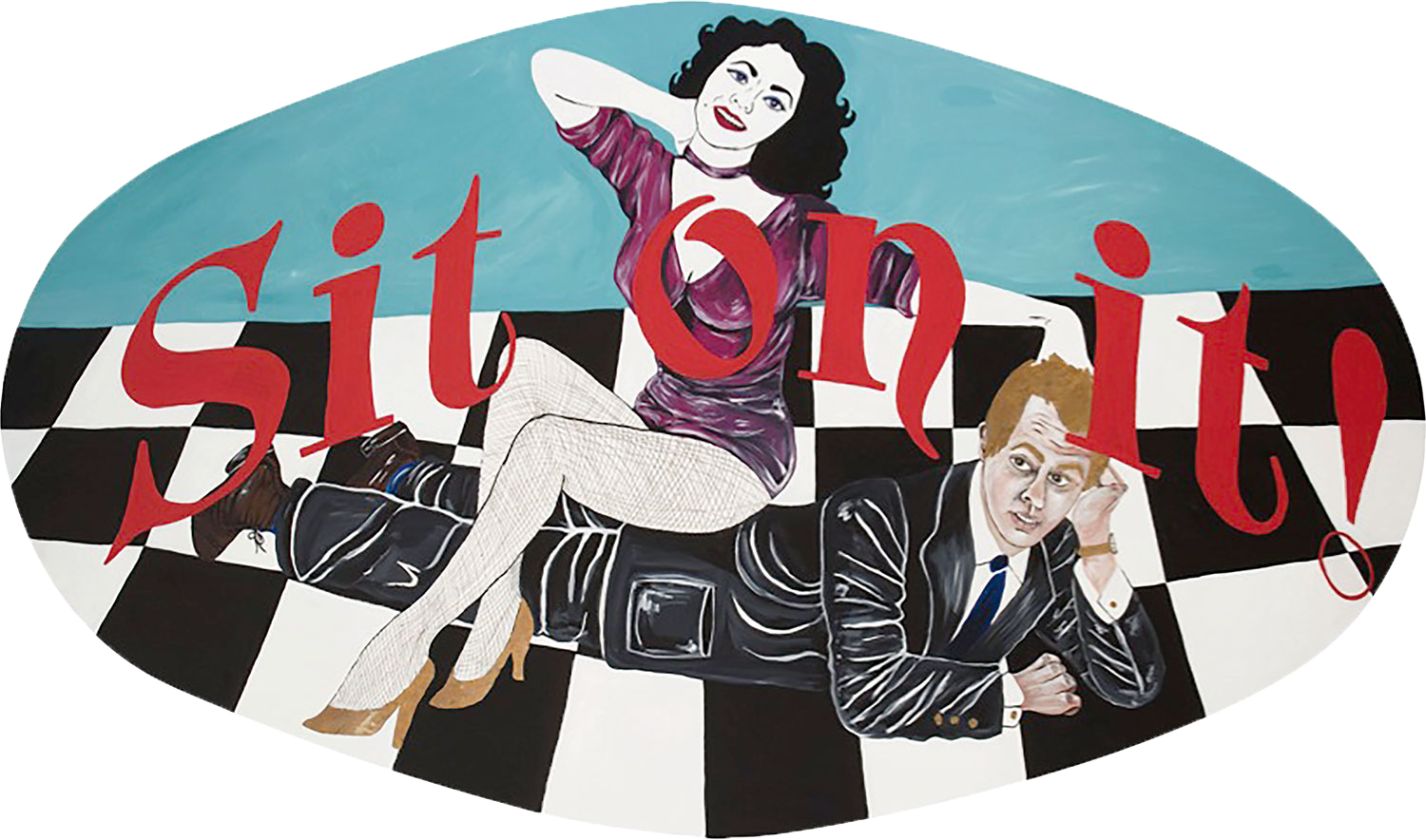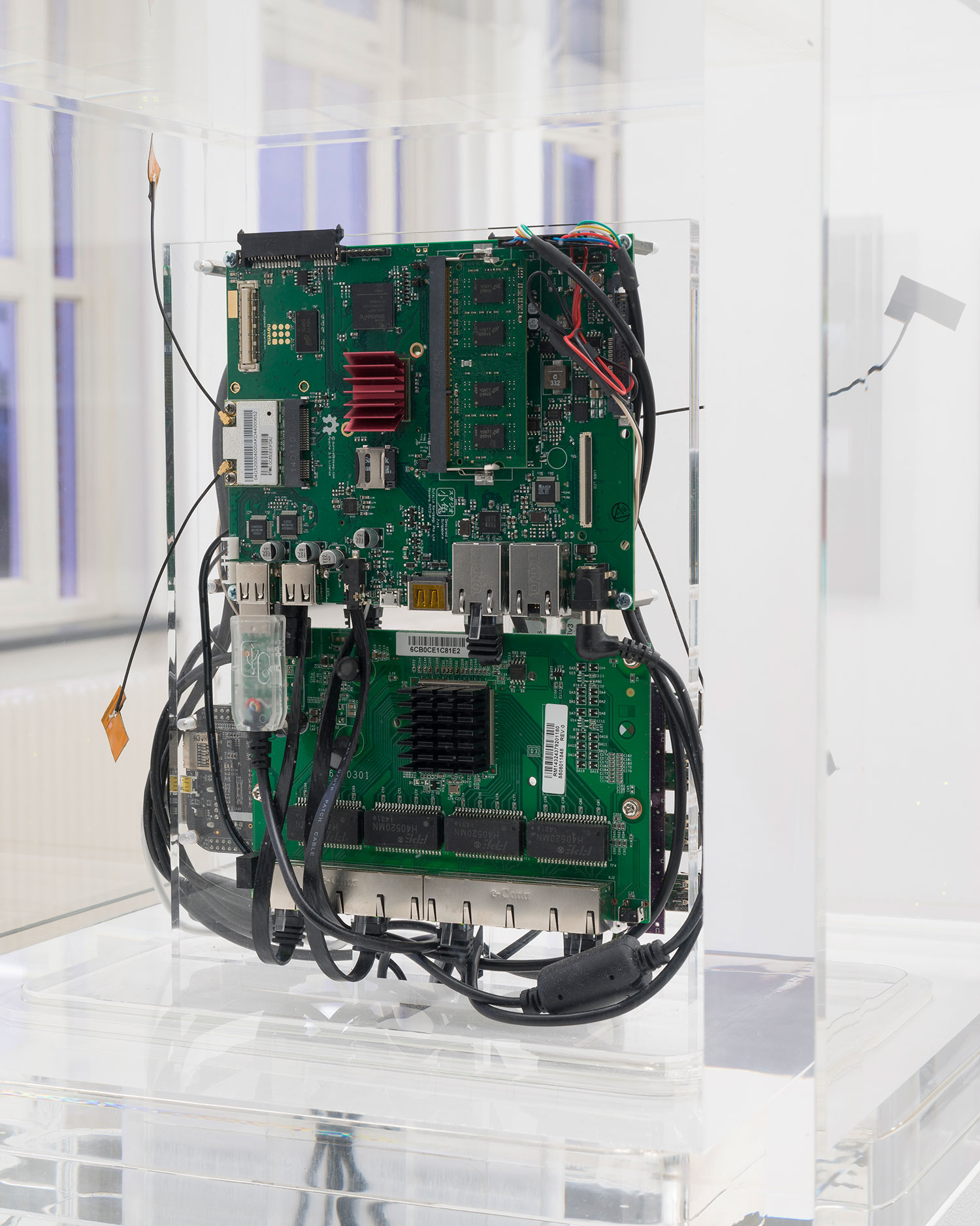
Right now, fashion is breeding with other industries more furiously than ever. The best new museums are connected to fashion brands: the Prada Foundation and the Fondation Louis Vuitton. Every street corner in Paris last fall cooed that Céline <3s John Giorno, an artist and poet simultaneously <3’d by the Palais de Tokyo. People wearing Hermes Apple Watches shiver when thinking back to Burberry’s Angela Ahrendts’s exit to Apple in 2014, a move that prompted fashion headhunter Floriane de St. Pierre to declare the birth of the “creative leader” and the decline of the corporate CEO.
In this context, it’s almost funny to consider how far ahead of the game Issey Miyake has been. In 1971, he became the first globalized Japanese fashion designer when he opened full-time press offices in New York. His practice has always been about technology and collaboration — the page on his web site dedicated to his design philosophy says that it was in the 1970s that Miyake first “joined with a number of collaborators, the result of which was the development of many new fabrics […] that incorporated traditional handcrafts wedded to the newest technology.” The most straightforward example of this is his Pleats Please line, which invented a new form of permanent fabric pleating by heat-pressing textiles sandwiched between two layers of paper. Another is his foil-pressed “Starburst” collection from 1998, which was a techno-utopian response to the concept of dwindling future resources. It bonded fine sheets of foil over cotton, flannel, wool and felt to create garments with a shiny, shredded aerospace effect. Final Home, a brand was conceived by one of Miyake’s former staff designers, took a fear of Armageddon to the next level, creating jackets that could be stuffed with newspapers for warmth or with “emergency goods” for evacuation.
But the portrayal of Issey as a fully “high tech” fashion designer has another, more mainstream inflection: his role in the creation of the look of our ultimate tech symbol and the form of dress associated with him. I’m talking about Steve Jobs’s black turtleneck, designed by Miyake and worn by Jobs every single day for many years.
The story, as recounted in Walter Isaacson’s 2011 biography Steve Jobs, began in the early 1980s, when Jobs met Sony chairman Akio Morita. He was impressed by the uniform worn by all the workers in the Sony factories, which had been designed by Miyake: a rip-stop nylon jacket with sleeves that could unzip into a vest. Jobs hit up Miyake and asked him to design samples for Apple, hoping to channel the “bonding” Morita described among the Sony factory workers. The Apple employees were unconvinced and, booed the idea of companywide uniforms off the stage. Steve, however, seemed “to like the idea of having a uniform for himself, both because of its daily convenience (the rationale he claimed) and its ability to convey a signature style.” Isaacson recalls Jobs saying that when he asked Miyake to make some of the black turtlenecks that he liked, he gave him “like a hundred” of them. To prove it, Jobs showed the biographer where he kept them stacked up in his closet. “That’s what I wear,” he said. “I have enough to last for the rest of my life.”

Like the cartoon character Doug Funnie, who opened his closet to show dozens of hangers with his daily uniform of brown sweater vest, white shirt and shorts, Jobs had a closet full of Miyake. He wore the black turtlenecks with Levis 501s and gray New Balance sneakers. The New Balances represented grounded comfort, the jeans suggested an American working man’s swag, and the turtleneck, of course, signified designer — the sweet spot between poet and architect.
It’s heartrending to think of Jobs boasting a lifetime supply when his actual remaining lifetime was so limited. But this points to what I believe is at the core of the desire for a personal uniform: a doomed belief in timelessness. One can imagine the black turtleneck beside a yellow legal pad and a green billiards table (two objects that informed Apple’s skeuomorphic user interface) on Steve Jobs’s Mount Olympus of ‘perfect things’.
There have been many famous attempts at personal uniforms over the years. Powerful men who have been celebrated for wearing the same thing every day include: Giorgio Armani (navy blue silk T-shirt, cashmere sweater, navy drawstring pants, white sneakers); Daniel Libeskind (Brioni leather blazer, Prada T-shirt, cowboy boots); and Erik Satie (who used a small inheritance to purchase a dozen identical chestnut-colored velvet suits). Mark Zuckerberg justifies his iconic everyday hoodie as an altruistic lifehack: “I’m in this really lucky position where I get to wake up every day and help serve more than a billion people. I really want to clear my life to make it so that I have to make as few decisions as possible about anything, except how to best serve this community.” The personal uniform saves time and resists history — showing that the wearer is beyond responding to the changes of the everyday. He has superseded the anxious conflict between personal authenticity and social relevance by denying it altogether.
Of course, the joke of what I like to call “zero obsolescence” dressing is the fact that it doesn’t exist. The timeless uniform becomes both historicized and intensely distinctive. Neither the yellow legal pad nor the green billiard table can be found in today’s iOS; they dissolved into gradients in 2013. If the #stevepunk look is cool now, it’s because it’s kind of camp: an exquisite corpse of old intellectual, old working class and old person.

The inclusion of Miyake’s work on the (now deceased) body of Steve Jobs stands out to me because it sets two very different ideas of timeless, uniform style against each other. Steve Jobs represents the failure to achieve a timeless, consistent look by rigidly enforcing a style. Issey Miyake, on the other hand, has come very close to achieving a timeless aesthetic — perhaps closer than any other fashion designer — by denying pure consistency all together.
In his statements, Miyake is straightforward about the predicament of fashion. His original goal was to create democratic fashion that was simultaneously “inspired by current aesthetics” while going “beyond the fads and trends of the moment.” In practice, this means his designs unfold in many contexts inside and outside “real” fashion. Middle-aged ladies, especially in Asia, love the Pleats Please line for their synthesis of body forgiveness and visual weirdness. And many curatorial women have remarked to me that Issey is the “uniform of the art world”. At the Frieze Art Fair this fall, a friend joked that if you did a drinking game where you took a shot every time you saw one of Miyake’s resin Bao Bao bags, you’d die of alcohol poisoning before the day was up — they’re that ubiquitous.
Yet Miyake’s clothes will never be “uniforms” in the Steve Jobs sense of the word — not even with their Japanese workwear DNA. The reason is that Miyake’s materials have randomness built into their folds, pleats and loops. They spill out into the world in an unplanned fashion. It’s like an unknown temporal dimension is built into every superficially similar garment.
Two lines — A-POC and 132 5. ISSEY MIYAKE — are the best examples of how he’s used material technology to trouble or reconfigure the “one-size-fits-all” idea.

Of all of Miyake’s disruptions and innovations, his A-POC line is perhaps the coolest, bypassing traditional construction by knitting tubes of material with links and holes between each side that allow different variations of seamless garments to be cut from a single tube. Very little material is wasted. The name is simple — it stands for “A Piece of Cloth,” but puns on “epoch” (a nod to the time bomb at the heart of fashion). At the “Issey Miyake: Making Things” exhibition at the Museum of Contemporary Art, Toyko, in 2000, a giant spool of fabric rolled through the space, with full human forms springing up from the continuous roll of fabric. Each one was a different inflection of the code written for each garment. As Dai Fujiwara, Miyake’s collaborator on the line, writes: “Analyzing A-POC clothing, one finds a set of dots. If one is to consider these dots to be like genes in a human body, each A-POC dress may consist of as many as two hundred million ‘genes.’”
The more recent 132 5. ISSEY MIYAKE line distills this principle to a total of ten basic folded forms — each one becomes a shirt, skirt, tote or dress depending on how you slice it. A flat bronze disc may pop open to become a shoulder bag or a one-shouldered sheath-like tube. The series of numbers in the brand name are code for the multi-dimensional design strategy: 1 (piece of cloth) can be come a 3 (dimensional) garment and then refolded into a 2 (dimensional) sheet of fabric again. The missing 4 represents the space skipped over when hopping into the future. It ends with at 5, which stands for “the temporal dimension that comes into being after the clothing is worn by people.”

The gap in this sequence is telling. True timelessness in fashion is not like the uniform that saves time. Rather, it’s more like what the word suggests: fashion that loses time, or gets rid of time all together. The vestigial segmentation of different clothes for different times of day (jodphurs for riding, dinner clothes for dinner) is mirrored by the segmentation of different garments for different parts of the body. Clothing with a flat structure like A-POC, 132 5, or the traditional kimono, effaces these segmentation lines by folding right past them. As the scholar Richard Martin wrote of the (then) current guard of Japanese designers in his 1995 essay “The Kimono Mind”: “The emotional and spiritual presence of the clothing takes no regard for the time of day, but only for the emotional and intellectual position of the designer and thereby of the wearer.”
This comes in contrasts not only to the uniform-wearers who cling to their unique personal style but also the historical pastiche strategy of current labels J.W. Anderson and Vetements, who attempt to escape fashion’s timescape by rapidly combining signifiers from many periods in a single look. It’s an effort to outsmart an increasingly fragmented fashion system built on micro-seasons, pre-Resort and “fast fashion.” In this context, Miyake’s single roll of material looks smoother and more fluid than ever. His designs channel timelessness in their aesthetic vision and in the randomness of their material inflection. They capture the spirit of the uniform — the desire for an eternal fashion — without enforcing it literally. Or at the expense of bodily reality. Long live Issey Miyake.

